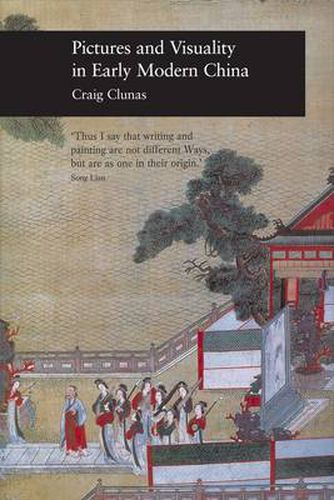Readings Newsletter
Become a Readings Member to make your shopping experience even easier.
Sign in or sign up for free!
You’re not far away from qualifying for FREE standard shipping within Australia
You’ve qualified for FREE standard shipping within Australia
The cart is loading…






The sixteenth century in China was a period of rapid and unprecedented economic expansion. The period also saw a parallel growth in the sphere of cultural production,as a growing class of consumers benefited from the formation of one of the classic early modern consumer societies. Pictures were a major source of consumable luxury at this time; pictures not only in the form of images classifiable as ‘art’, but also in the form of wall decoration, in books, maps, images on ceramics, and even on the dress of the prosperous. Artefacts that had previously been decorated with formal patterns now bore landscape scenes, representations of historical characters and incidents, and scenes from literature, often closely related to the world of the illustrated book. This is the first survey of this vast array of images in all its aspects, providing a stimulating and innovative point of entry to Chinese history. Pictures and Visuality in Early Modern China will be of interest to students of China’s history and culture and to anyone exploring theories of visuality.
$9.00 standard shipping within Australia
FREE standard shipping within Australia for orders over $100.00
Express & International shipping calculated at checkout
The sixteenth century in China was a period of rapid and unprecedented economic expansion. The period also saw a parallel growth in the sphere of cultural production,as a growing class of consumers benefited from the formation of one of the classic early modern consumer societies. Pictures were a major source of consumable luxury at this time; pictures not only in the form of images classifiable as ‘art’, but also in the form of wall decoration, in books, maps, images on ceramics, and even on the dress of the prosperous. Artefacts that had previously been decorated with formal patterns now bore landscape scenes, representations of historical characters and incidents, and scenes from literature, often closely related to the world of the illustrated book. This is the first survey of this vast array of images in all its aspects, providing a stimulating and innovative point of entry to Chinese history. Pictures and Visuality in Early Modern China will be of interest to students of China’s history and culture and to anyone exploring theories of visuality.